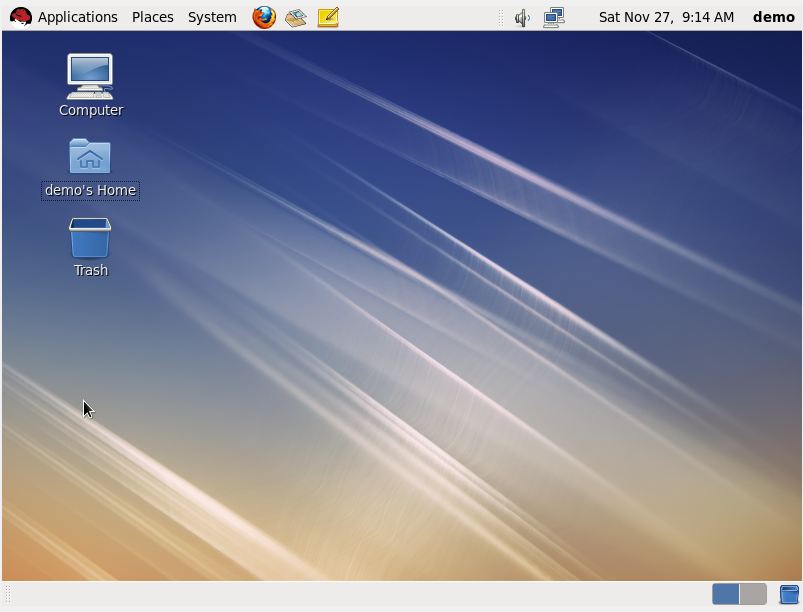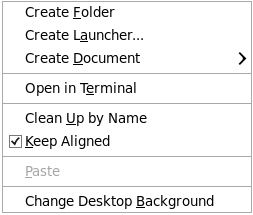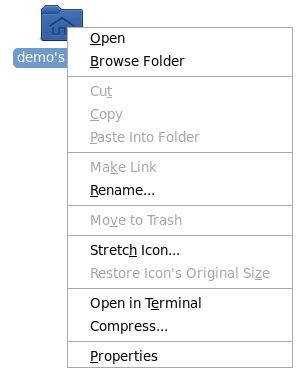A Guided Tour of the RHEL 6 GNOME Desktop
| Previous | Table of Contents | Next |
| Configuring RHEL 6 GNOME Screen Resolution and Multiple Monitors | Configuring the RHEL 6 GNOME Desktop Background |
<google>BUY_RHEL6</google>
In this chapter of RHEL 6 Essentials we will provide a guided tour of the Red Hat Enterprise Linux 6 GNOME Desktop. The purpose of this overview is to provide a high level explanation of how the desktop works and what the various areas, menus and icons are for. As each area is described you will be referred to a subsequent chapter where the configuration of that particular feature or function will be outlined in greater detail.
The RHEL 6 GNOME Desktop
Once you have entered a valid username and password the login process will initiate and the GNOME Desktop will load. The amount of time it takes before the desktop appears will depend on a variety of factors, not the least of which is processor speed, memory and current system load. The more memory installed in the system and the faster the processor, the quicker the desktop will appear. The following figure shows a new, unaltered RHEL 6 desktop immediately after a successful log in.
Assuming you have now logged successfully into a desktop session, and have a screen in front of you similar to the one shown above we can begin to explore the desktop in more detail.
The Desktop Background
<google>RHEL6BOX</google> The desktop background constitutes the swirling graphics in the above figure. If you don't like the default desktop background you can change it to either a selection of pre-installed images, or to a digital picture or image of your choosing. To find out more about customizing the background refer to Configuring the RHEL 6 GNOME Desktop Background.
The desktop also provides a location for folders and applications for which quick access is required. A link to the user’s home folder is added to the desktop by default, as are the Computer and Trash icons. The former provides access to storage devices and the network. The latter contains any files that have been placed in the trash can. For more details on these desktop features refer to Browsing the System, Files and Folders on the RHEL 6 Desktop.
Clicking with the right mouse button on any area of the desktop background presents the following popup menu containing a number of useful options for changing or adding items to the RHEL GNOME desktop:
- Create Folder - Creates a new folder on the desktop. A new folder icon appears on the desktop with a field provided for the user to enter a folder name. The folder is physically located in the Desktop folder of the user's home directory.
- Create Launcher - Allows an icon to be placed on the desktop which, when double clicked, launches a specified application. Another way to add application launchers to the desktop is to find them in the menu systems at the top of the screen, right click on them and select Add this launcher to desktop.
- Create Document - Creates a new document on the desktop (the resulting file is physically located in the Desktop folder of the current user's home directory).
- Open in Terminal – Launches a terminal window containing a shell command prompt where commands may be entered and executed. The current working directory of the shell within the terminal is set to the Desktop subdirectory of the user’s home folder.
- Clean Up by Name - Sorts and organizes the desktop icons in alphabetical order.
- Keep Aligned - A toggle setting which dictates whether icons should be neatly aligned on the desktop or allowed to be placed arbitrarily around the desktop.
- Change Desktop Background - Allows a different background image to be specified.
Right clicking on an icon produces the following menu allowing tasks to be performed on the selected item:
The Desktop Panels
The bars across the top and bottom of the desktop are called panels. Both the content and position of these panels can be configured, a topic which is covered in detail in Configuring the RHEL 6 GNOME Desktop Panels.
By default the top panel appears as follows:
The Application menu provides access to the applications installed in the system. The Places menu provides a list of locations which, when selected, are opened in file browser windows. Available locations include devices (such as disk or CD/DVD Drives), the current user's home folder and other systems on the network. The System menu provides options for configuring the system and desktop environment (including factors such as desktop theme and screen resolution).
The icons next to the system menu provide quick access to common applications and tools. The default icons will depend on the packages installed (such as Firefox, the Evolution email client and the OpenOffice office productivity tools) but may be configured to add additional launchers for tools or applications you find you use regularly.
The right hand side of the panel includes the current time, a volume control and a network status indicator. To establish a network connection, access a variety of configuration options by clicking with the left and right mouse buttons on the icon.
Also present on laptop based installations is an icon indicating current power status. A variety of other status icons will appear in this section from time to time. Typically hovering over or clicking on the status icon will display a brief description of the icon’s purpose. For example, two additional icons are present in the above figure indicating that updates are available for the system (represented by the bug icon) and that the package manager has messages that are need to be read (the cardboard box icon).
As you perform administrative tasks on the system that require authentication using the root password, you will see a set of keys appear in the top panel. This indicates that elevated root (administrative) privileges have been assigned to the desktop session allowing sequential tasks to be performed without repeatedly entering the root password. To de-authorize these elevated privileges simply click on the icon.
The bottom desktop panel contains three items by default but may similarly be configured as described in Configuring the RHEL 6 GNOME Desktop Panels. By default the panel appears as follows:
The area containing squares controls the currently displayed virtual workspace. The RHEL GNOME desktop allows multiple workspaces to be active at any one time with different applications and windows visible on each workspace. To switch to a different desktop, simply click on one of the squares in the bottom toolbar. If your mouse has a scroll wheel, click on a workspace in the panel and then scroll back and forth through the workspaces. By default two workspaces are configured, though this number can be increased or decreased (see Configuring the RHEL 6 Desktop Panels). To move an application window from one workspace to another, right click on the window toolbar and select the destination workspace from the Move to Another Workspace sub-menu.
When applications are running on the desktop, a button will appear for each application located on the currently selected workspace. If the application’s windows are currently visible on the desktop, clicking the corresponding button in the panel will minimize the windows so that they are no longer visible. Clicking the button again will re-display the windows once again. The final item on the bottom panel is the trash can. Items may be dragged and dropped into the trash can. Right click on the icon to access options to open or empty the trash can.
Now that we have covered the basics of the desktop we can begin looking at customizing the desktop. The first step involves changing the RHEL GNOME desktop background.
<google>BUY_RHEL6_BOTTOM</google>
| Previous | Table of Contents | Next |
| Configuring RHEL 6 GNOME Screen Resolution and Multiple Monitors | Configuring the RHEL 6 GNOME Desktop Background |


